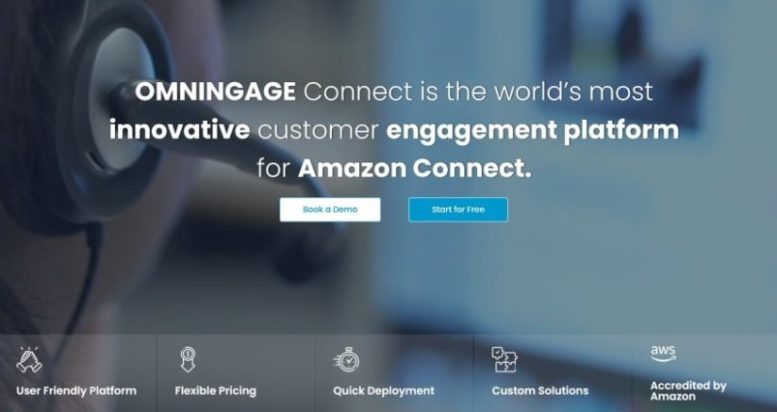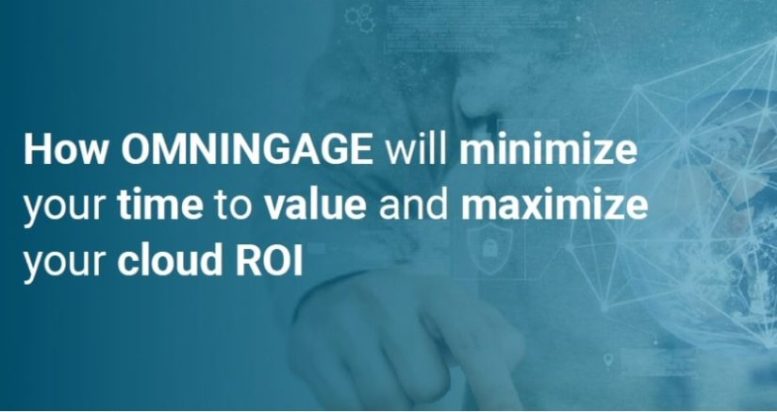Omningage Connect and Chatbots – doing more with a lot less in your contact centre as Omningage explains
Chatbots – origins and explanations
Technology has always driven the contact centre industry. Contact centres allowed customers to contact companies from their own homes or offices without having to visit local branches.
More recently, the development of the internet led to digitization and alternative communication channels. Webchat allowed customers to enjoy the instant response of an agent in a phone call, but communicate in writing. Agents can handle up to three webchats simultaneously, while they can only handle one call at a time.
Chatbots take this one step further. Dhruv Mehta, defined Chatbot’s as “computer software that can mimic human conversations”.
Chatbots can be used to replace the agent altogether. To find out the benefits, drawbacks and best practices of setting up and using chatbots, read on.
Omningage Connect and Chatbots

Programming a bot needs careful preparation.
The first step is to decide which processes you want the bot to handle, what information they collect and what information or services they provide the customer.
This should be broken down into separate stages. The task the bot will perform must be clearly defined. It requires input, this too must be clearly defined. To get this input, you will need to design a question for the customer to answer. The task will be completed when the bot responds to the customer’s question, either by asking another question, or giving some information or taking some action. The full interaction with the customer will be a series of these tasks, and the customers’ answers will determine how the bot navigates from task to task.
The bot will often interact with back office functions to write customer information in a database or retrieve information for a customer. Amazon Lex can easily handle such tasks as a result of its native integration with AWS Lambda, Amazon’s cloud based computing service.
Chatbots: Benefits, Drawbacks and Best Practices
Benefits
» 24/7 service: When you use Omningage Connect on top of Amazon Connect, the only part of the system that gets tired, needs to go home, take vacations etc. are the agents. Automated chatbots can run 24/7 and do not need to be paid overtime.
» Instant response: Human agents can handle one call, or three chats at a time. A human agent, if she is involved in a difficult or complex issue, may not immediately respond to an incoming chat, even if she does theoretically have the capacity. Automated bots respond as soon as possible, regardless of how many chats they are given to handle.
» Multilingual responses without multilingual recruitment: As your customer base becomes increasingly diverse, so does its choice of languages. Having English speaking agents on duty 24/7 is unlikely to be a challenge. Outside Hungary, finding enough Hungarian speaking agents to provide a round the clock service is another matter. Bots can be programmed to respond in any language, so they can take up the slack for the less popular languages when the agent who speaks that specific language is off duty.
» Unlimited response: Most human agents can handle at most 3 chats simultaneously. The only limits a bot has are the constraints of its technical environment.
» Cost effectiveness: Amazon Lex bots working with Omningage Connect, like all Cloud solutions, will increase their consumption costs as they scale up. The bots’ cost per minute is still far lower than the cost of their human counterparts, and bots do not need payroll deductions for Income Tax and National Insurance.
» Machine learning: Bots can be programmed to train themselves based on customers’ responses, so streamlining their services to resolve customer queries more quickly.
Drawbacks
You might be thinking that this technology will make contact centre agents an endangered species. Far from it!
The drawbacks centre around one key factor – emotions.
» Empathy: Real Language Understanding is a poor substitute for empathy. Chatbots cannot understand or handle an angry, frustrated, upset or desperate customer. This is why no attempt has been made to replace human agents on emergency response lines, where a calm sympathetic voice can make the difference between life and death.
» Experience: Humans, unlike machines, are born with empathy. They still need to experience handling emotionally challenging situations to help the caller effectively. This experience only comes from doing the work, making the decisions and learning from what goes well and badly.
» Cultural sensitivity: As communities become increasingly diverse, certain responses may “work” for some customers and not for others. A human agent can pick up emotional undertones that gives clues to a cultural disconnect and navigate their way through them. Machines cannot do this.
» Improvisation: There are times when the standard response is not quick enough or does not do the job. When a customer calls in to report a gas leak in her home, a human agent can understand the urgency and may creatively “cut corners” to speed the repair process up. Chatbots cannot recognize this urgency, which appears not only in the facts of the case, but also in the emotional content of the customer’s language.
Best Practices

Before installing a bot, it’s a good idea to list the contact centre’s processes and classify them by their simplicity, consistency and their potential for emotion.
A task such as online registration for a media streaming service is fairly simple. The information collected is standardized and consistent. This would be a good task for a bot.
Hospitals rarely use bots to register new patients or set appointments. The range of ailments a patient may suffer is so great that a medical professional needs to ask the right questions to triage the patient. The task is neither simple or consistent. Health is also an emotive issue. People who are frightened or in pain do not want to describe their symptoms to a machine, they want the comfort a human voice provides.
Using your contact centre’s traffic as a benchmark, you can list the various processes and their average volumes, then decide which ones can be automated. Using the processes’ AHT, you can calculate how much they currently cost and set that against the bot’s potential operating costs and so calculate the Return on Investment.
You may want to use the bot as your first line service to handle simple tasks. Experience shows that it is better not to present it to customers as a human being. This manages their expectations in terms of the answers they receive and limits their inclination to escalate to a human agent.
There will always be some customers who prefer dealing with a human being. It’s important to give your customers that option even if it is more expensive. Customer experience is a key competitive arena. If your competitors offer this experience and you don’t, you may lose those customers to your rival.
If you hope your bot will handle a large share of interactions, you will need to build identity checks and protocols into the bot. Under GDPR, Data Processors are still responsible for their customers’ data, even if the data is not being processed by human beings.
Bots cannot handle every situation. It’s worth programming the bot to recognize this, and proactively move the customer to a human rather than force her to make the extra effort to communicate with one.
When this happens, the bot should be programmed to pass on all information, including conversation transcripts, to the human agent. This saves the customer from repeating the information and allows the agent to continue the conversation smoothly.
Machine learning can help a bot improve its responses based on facts and data. It will not improve the system’s emotional effect on customers. It’s worth using customer satisfaction surveys with bot-based interactions. Customers consistently responding poorly to certain transactions may help you to improve performance by changing scripts or processes.
Human agents and bots should be measured using the same KPIs. If certain processes seem to have longer AHT or a lower FCR than others, this may indicate opportunities for improvement.
Wrap-up
Integrating bots into your contact centre offers tremendous potential to increase capacity at a lower cost. If you are looking for a cloud-based contact centre solution to leverage this potential, then you’ll want to talk to Omningage.






